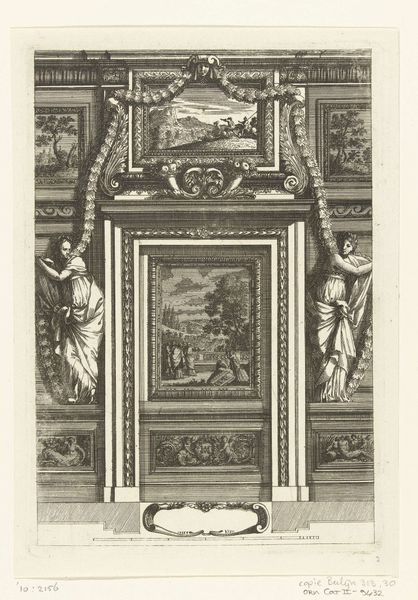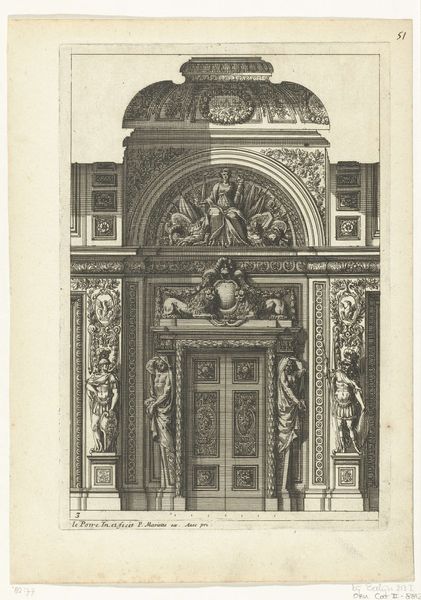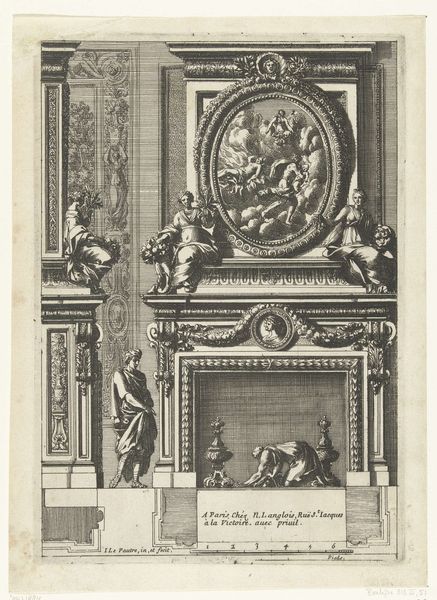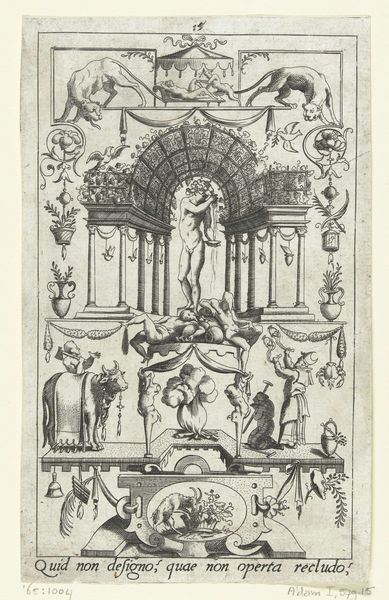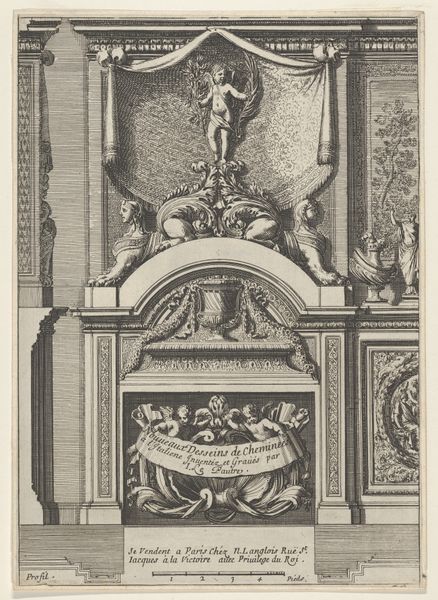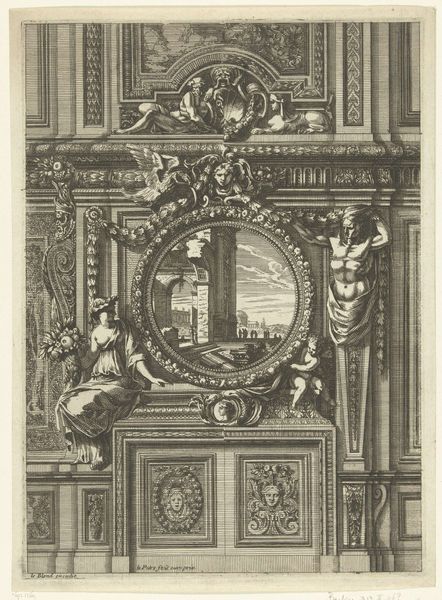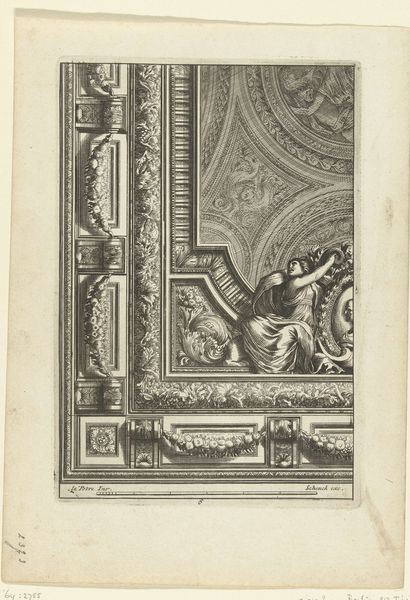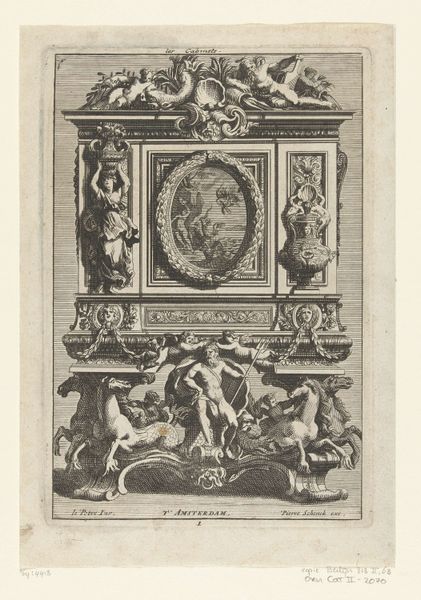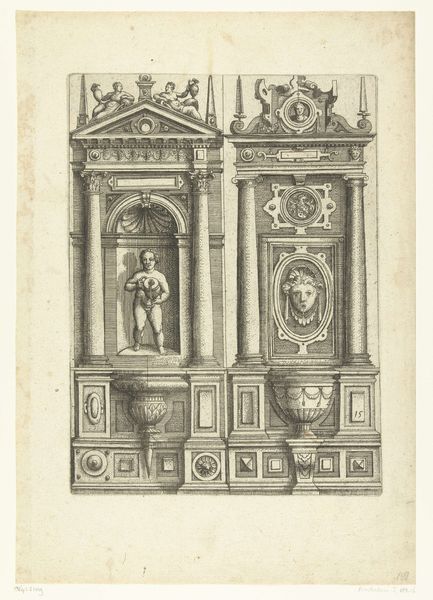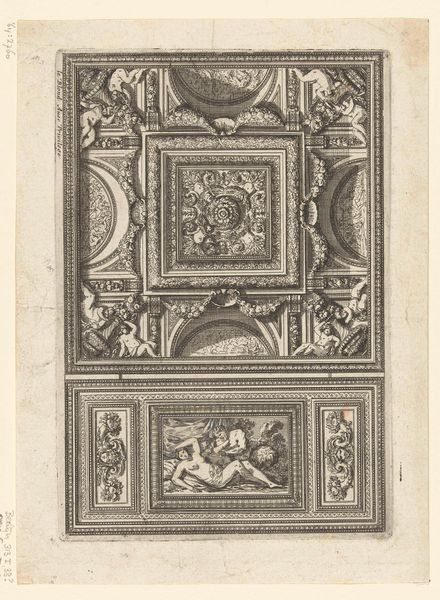
drawing, print, engraving, architecture
#
drawing
#
baroque
# print
#
history-painting
#
decorative-art
#
engraving
#
architecture
Dimensions: height 227 mm, width 152 mm
Copyright: Rijks Museum: Open Domain
Jean Lepautre created this print of a ‘Lambris a la Romaine’ in France, sometime in the 17th century. This title page shows us a design for interior wall panelling and exemplifies the cultural fascination with classical antiquity that defined European art at this time. The image creates meaning through its visual codes, alluding to ancient Roman art and architecture. The sculpted figures, framed portraits, and decorative motifs evoke a sense of grandeur and sophistication, reflecting the values of the French court and aristocracy. As the Royal Academy of Painting and Sculpture gained influence, artists became increasingly interested in elevating the status of the decorative arts, seeing them as an expression of national identity and cultural prestige. To understand this print fully, we need to consider its social and institutional context. By exploring sources like period treatises on design and architecture, and records of the Royal Academy, we can gain insights into the cultural aspirations and artistic debates of Lepautre's time. Art history demonstrates that artworks are shaped by the social conditions and cultural institutions in which they are created.
Comments
No comments
Be the first to comment and join the conversation on the ultimate creative platform.

